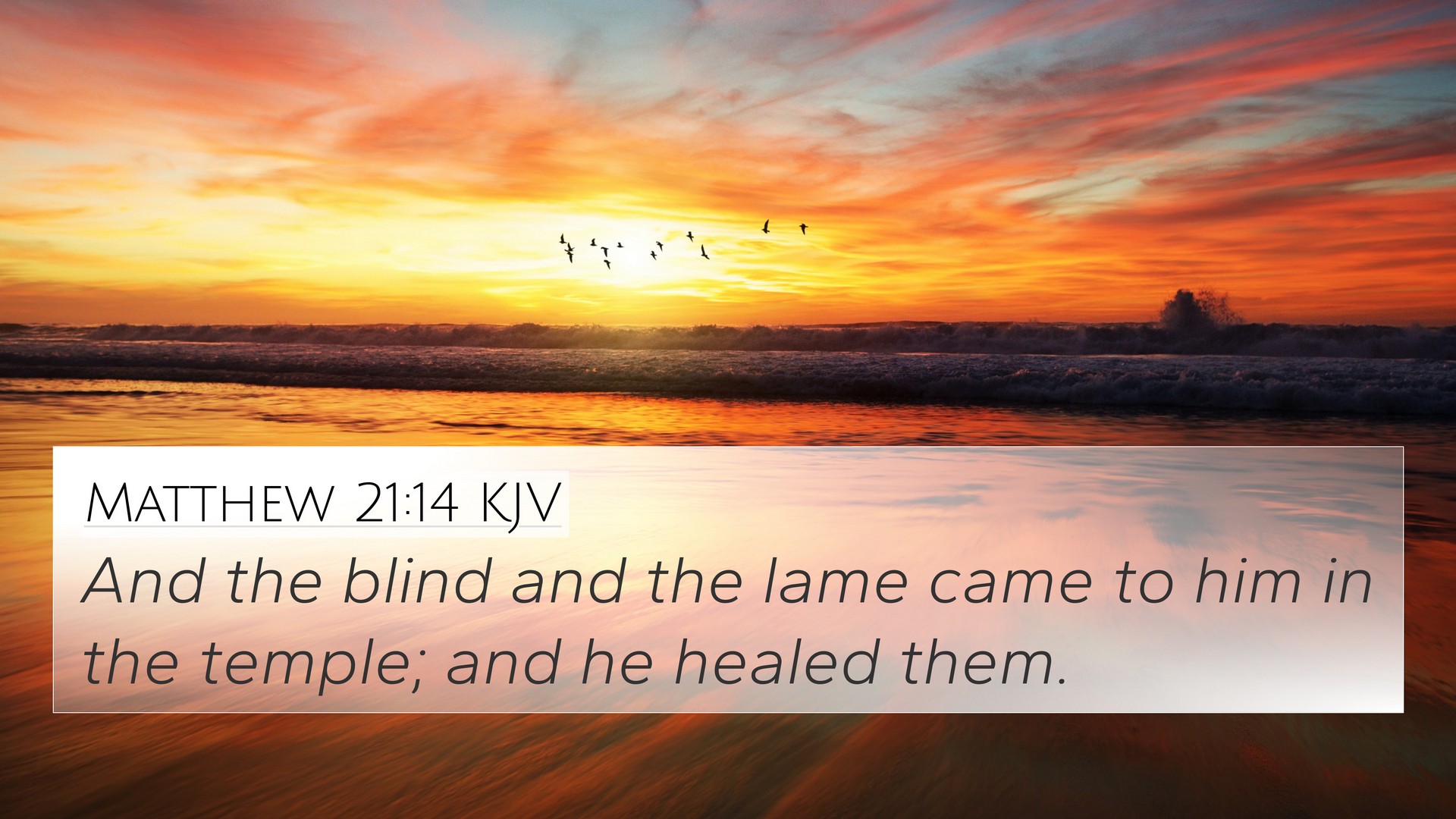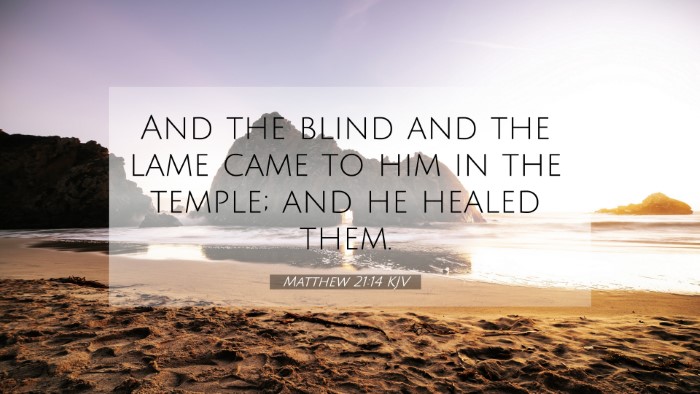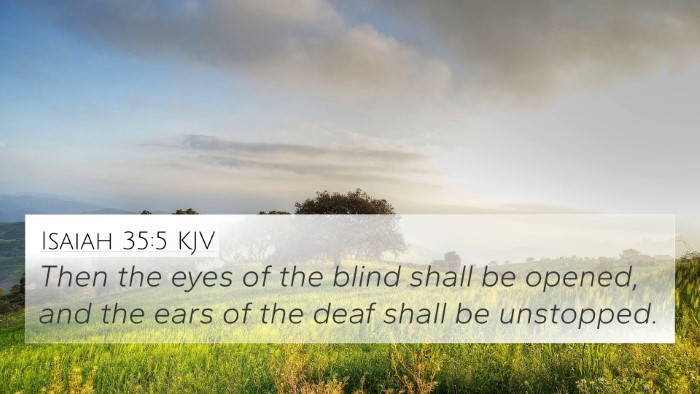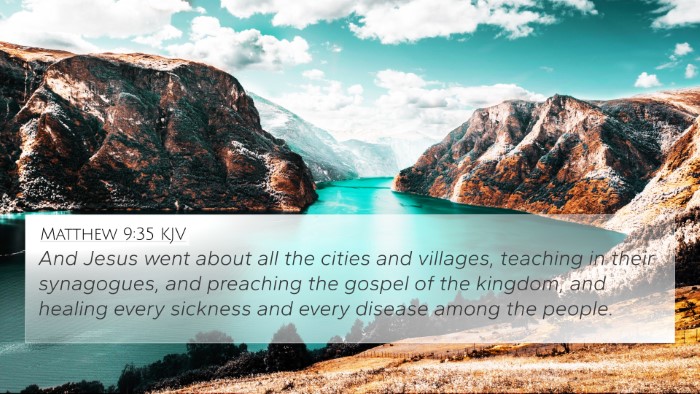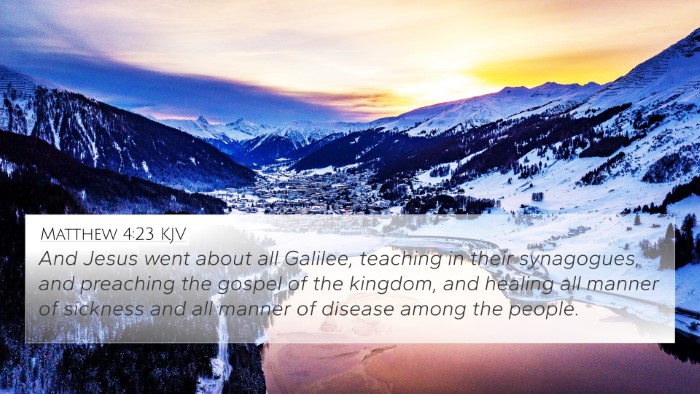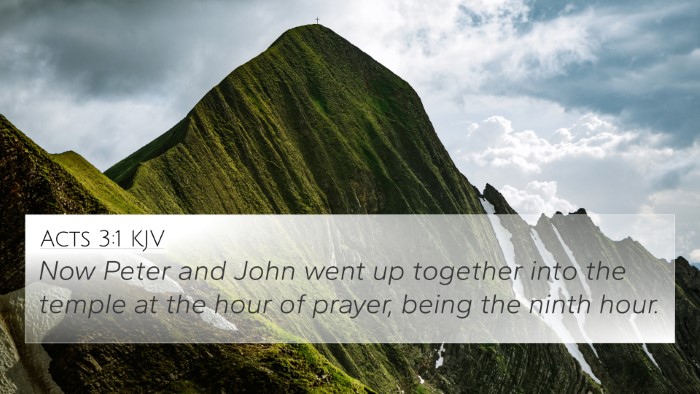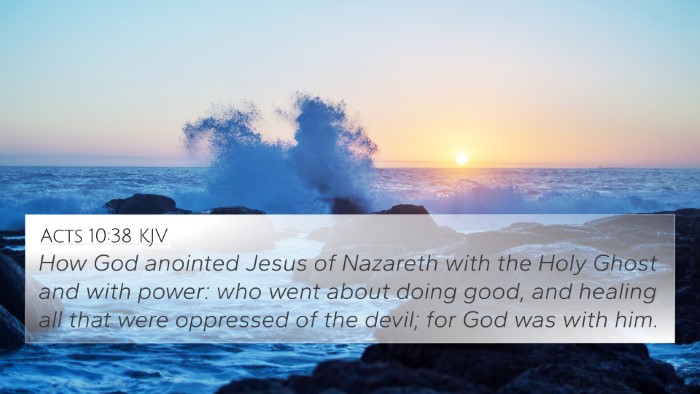Understanding Matthew 21:14
Verse: "And the blind and the lame came to him in the temple; and he healed them."
This verse captures a significant moment in Jesus' ministry, showcasing His compassion and power as He heals those who are often marginalized. Below is a combined interpretation drawn from notable public domain commentaries, providing insights into the depth of this passage.
Contextual Background
The context of Matthew 21:14 is essential for understanding its implications. This event takes place shortly after Jesus' triumphal entry into Jerusalem, where He is recognized by some as the Messiah. The temple, the heart of Jewish worship, is not just a place for rituals but a venue for Jesus to demonstrate His authority and compassion.
Commentary Insights
-
Matthew Henry:
Henry emphasizes that the healing of the blind and lame illustrates Jesus’ fulfillment of prophecy (Isaiah 35:5-6). This act serves not merely as a physical healing but as a manifestation of restored hope and wholeness for those cast aside by society.
-
Albert Barnes:
Barnes notes that the temple's atmosphere likely made it a pivotal place for miraculous works. The arrival of the blind and lame signifies a rejection of the religious elite, who have failed to provide guidance or healing. Their coming to Christ demonstrates faith in His divine ability.
-
Adam Clarke:
Clarke remarks on the significance of Jesus healing the outcast. By performing miracles in the temple, Jesus not only affirms His divine mission but challenges the existing religious structures that had marginalized such individuals.
Thematic Connections
Compassion and Healing: This verse reflects the overarching theme of Jesus’ ministry, where compassion and healing are central to his mission. It aligns with the Gospel narrative of Jesus as a healer.
Social Justice: The inclusion of the blind and lame highlights themes of social justice in the New Testament, emphasizing that everyone deserves healing and dignity.
Bible Verse Cross-References
To deepen our understanding of Matthew 21:14, we can explore several related scriptures:
- Isaiah 35:5-6: Prophecy of physical and spiritual healing.
- Matthew 11:5: Jesus healing the blind, lame, and others, reinforcing His Messiahship.
- Luke 4:18: Jesus quotes Isaiah, proclaiming good news and freedom to the oppressed.
- Mark 2:17: Jesus states He came to call sinners, illustrating His mission to the marginalized.
- John 9:1-7: Jesus healing a blind man, demonstrating His power and the purpose of suffering.
- Acts 3:1-10: Peter and John healing a lame man, showing continuity in the apostles' ministry.
- Luke 7:21-23: Another instance of healing where Jesus instructs them to testify of His works.
Links with Broader Biblical Themes
This passage invites us to see connections between the Old and New Testaments, especially regarding God’s continuous intention to restore His people. The miracles performed by Jesus highlight His active role in fulfilling the prophetic messages found throughout scripture.
Additionally, the act of healing in the temple signifies a shift in how divine favor and blessing are accessible, placing faith above ritualistic legalism.
SEO Keywords and Their Importance
When studying passages like Matthew 21:14, utilizing tools for Bible cross-referencing can enhance our understanding. By cross-referencing biblical texts, we uncover thematic Bible verse connections that enrich a broader interpretation.
Using a Bible concordance or a Bible cross-reference guide enables deeper exploration of how various scriptures relate to each other, particularly how healing is approached throughout both the Old and New Testaments.
Furthermore, engaging in a comparative Bible verse analysis allows for a more nuanced understanding of the narrative and its implications for believers today.
Conclusion
Matthew 21:14 serves as a profound reminder of Jesus’ mission on Earth. It challenges readers to reflect on the themes of healing, compassion, and the nature of faith. Such verses inspire personal application of its lessons and encourage us to explore related scriptures to deepen our scriptural understanding.
Overall, this passage encourages a closer examination of our interactions with the marginalized and the role of faith in viewing Jesus as the healer and redeemer.
